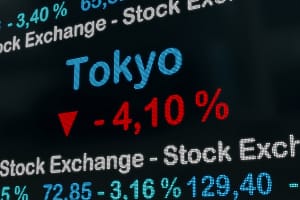The USD/JPY pair is going through a pivotal phase, reflecting a web of intertwined tensions stemming from geopolitical factors, macroeconomic variables, and the monetary policies of major central banks. In my opinion, the recent drop below the 142.00 level — the lowest in seven months — was no coincidence. Rather, it was a natural result of a series of sharp developments that have recently shaken the markets, bringing the Japanese yen back into focus as a traditional haven in times of fear and uncertainty.
At the forefront of these developments are the unexpected remarks by Japan’s Finance Minister Shunichi Kato, who stated that there is agreement between Japan and the United States that “excessive exchange rate volatility is undesirable.” While this statement may seem mild at first glance, it carries a subtle hint at the possibility of Japan intervening — either directly or indirectly — in the currency market should the yen’s fluctuations continue excessively. This statement, especially with a similar tone echoed by U.S. Treasury Secretary Janet Yellen, had a direct impact on the market. It prompted investors to rebuild their positions in favour of the yen, in anticipation of a possible imminent intervention or at least a firmer Japanese fiscal policy stance.
However, this shift in risk appetite is not solely due to Kato’s remarks. It is clear that the USD/JPY pair is facing a double blow: first, from continued selling of the U.S. dollar amid growing concerns that the Federal Reserve may resort to interest rate cuts once again; and second, from increasing demand for the yen as a haven in light of escalating trade tensions between the U.S. and China. In my view, China’s recent decision to raise tariffs on American goods — a direct response to Trump’s escalatory measures — has deepened market anxiety, fueling capital flows toward safe-haven assets such as the Japanese yen and U.S. Treasuries.
In my perspective, the break below the key support level of 142.50 is a significant development. It indicates that the market no longer views this level as a strong barrier against further decline. Despite some momentary rebound attempts, the overall momentum remains negative, especially as the policy divergence between the Bank of Japan — which remains hesitant to hike interest rates decisively — and the Federal Reserve — which markets now expect to adopt a more dovish stance, or even cut rates amid ongoing economic and trade pressures — continues to widen.
Therefore, I believe the bearish trend for the USD/JPY pair may not be temporary or fleeting. It is likely to persist in the short to medium term, barring any major surprises that could change the landscape. The fundamentals are increasingly aligning in favour of the yen — whether through rising global risk aversion, Japan’s firmer tone on currency stability, or the narrowing expected interest rate gap between the U.S. and Japan if the Fed indeed cuts rates.
Adding to the bearish outlook is the anticipation surrounding upcoming U.S. economic data, such as the March Producer Price Index and the University of Michigan Consumer Sentiment Index, which could confirm a slowdown in U.S. economic momentum. If these figures come in weaker than expected, they will likely strengthen the case for monetary easing by the Fed, further accelerating the dollar’s decline against the yen.
I also cannot overlook Japan’s indication of its intent to open tariff negotiations with the U.S. on April 17. This move suggests that Japan is already stepping up its diplomatic and economic efforts to mitigate the risks stemming from global tensions — reinforcing the yen’s role as a haven, especially if Japan succeeds in presenting itself as a stable, rule-abiding trading partner.
In light of all the above, I expect the downward trend of the USD/JPY pair to continue, with a likely retest of the 141.00 level — and potentially a break below it — if the driving factors remain in place. This is particularly true amid mounting signals of verbal intervention from Japan and growing fears over the impact of the trade war on global growth. The decline could accelerate sharply if there is any official confirmation from the Bank of Japan or the Ministry of Finance regarding close market monitoring or a willingness to intervene.
In conclusion, markets have started to reprice their expectations for the USD/JPY pair based on real shifts in the global economic and political landscape — no longer relying solely on the interest rate differential between the dollar and yen as in the past. As a result, betting on continued USD strength against the yen has become increasingly risky, and the coming days may bring more surprises in this regard.





Leave a Comment